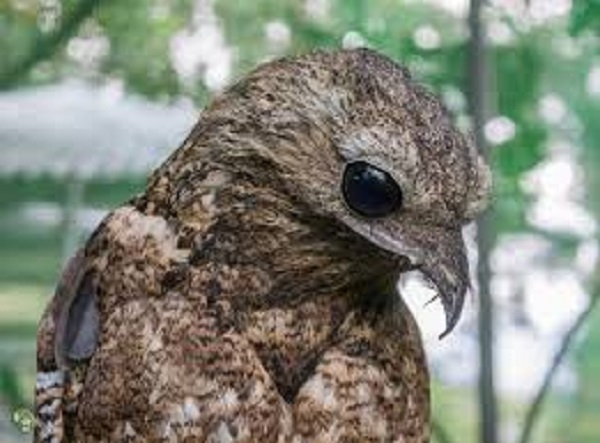
In the vast realm of avian wonders, the Potoo bird stands out as a truly enigmatic and fascinating creature. With its peculiar appearance and remarkable adaptations, the Potoo bird has intrigued and captivated bird enthusiasts and scientists alike. From its intriguing history to its natural habitats, this article will delve into the world of the mysterious Potoo bird.
The Potoo bird, also known as the “Poor-me-one” due to its haunting, mournful call, belongs to the family Nyctibiidae. There are several species of Potoos, including the Common Potoo (Nyctibius griseus), Great Potoo (Nyctibius grandis), and Rufous Potoo (Nyctibius bracteatus). These species are found across Central and South America, primarily inhabiting the rainforests, savannas, and open woodlands of the region.
The history of the Potoo bird is intertwined with legends and folklore. Indigenous cultures often attribute supernatural powers to these birds, associating them with the spirit world due to their nocturnal nature and eerie vocalizations. Furthermore, their cryptic appearance has led to tales of the Potoo bird being mistaken for a branch or log, evoking a sense of camouflage and mystique.
One of the most striking features of the Potoo bird is its unique appearance. With a large head, huge eyes, and a massive mouth, it possesses an almost comical expression. Its plumage further adds to its distinctiveness, resembling bark or tree branches, allowing it to blend seamlessly with its surroundings. This remarkable camouflage serves as a defense mechanism against predators and assists the bird in capturing its prey.
Being strictly nocturnal, the Potoo bird is perfectly adapted to its night-time lifestyle. Its large eyes have evolved to gather as much light as possible, enabling it to see clearly in low-light conditions. Equipped with excellent night vision, the Potoo bird has a keen ability to detect movement and spot insects, its primary food source. It perches on branches and patiently waits for unsuspecting insects to fly by, swiftly snatching them up with its wide, gaping mouth.
The natural habitats of the Potoo bird span a range of diverse ecosystems throughout Central and South America. They are particularly prevalent in the Amazon rainforest, where the dense foliage and abundance of insect life provide ideal conditions for their survival. Potoos can also be found in other countries such as Costa Rica, Panama, Colombia, Venezuela, Brazil, and Argentina, among others.
The Potoo bird’s habitat preference varies depending on the species. While some favor dense forests, others can be found in more open woodlands or grasslands. They typically select perches in tree branches, relying on their exceptional camouflage to blend in seamlessly and remain hidden from both prey and predators.
Sadly, like many other species, the Potoo bird faces challenges in the modern world. Deforestation and habitat destruction threaten their survival. As their natural habitats continue to shrink, the Potoo bird’s populations are decreasing, making their conservation a matter of great importance.
10 Fun Facts About Potoo Birds
Camouflage Masters
Potoo birds are experts at blending in with their surroundings. Their unique plumage resembles tree bark or branches, allowing them to virtually disappear when perched on a tree during the day.
Bizarre Facial Expressions
Potoo birds have large, striking eyes that give them a rather comical and expressive appearance. Their large eyes help them gather as much light as possible during their nocturnal activities.
Silent Flyers
Potoos possess special feathers on their wings that allow them to fly silently. This adaptation helps them sneak up on unsuspecting prey without making a sound.
Nocturnal Hunters
These birds are strictly nocturnal, spending their days perched motionless on branches. At night, they take to the skies to hunt insects, their primary source of food.
Unusual Vocalizations
The haunting calls of the Potoo bird have earned it the nickname “Poor-me-one.” The sound resembles a mournful human cry, which can be quite eerie to hear in the dark of night.
Limited Nest Building
Potoos do not construct elaborate nests like many other bird species. Instead, they lay their eggs on bare branches or ledges, relying on their cryptic appearance to protect them from predators.
Slow Growth
Potoo chicks have an unusually slow growth rate compared to other bird species. They may take up to two months to fledge and become independent, which is relatively long for a bird of their size.
Unusual Postures
When threatened or disturbed, Potoos adopt a unique defensive posture. They elongate their bodies and point their heads upwards, relying on their camouflage to make them look like an extension of the branch they are perched on.
Non-Migratory Behavior
Potoo birds tend to be sedentary and do not migrate over long distances. They usually remain within their preferred habitat range throughout the year.
High Difficulty in Spotting
Despite their large size, Potoos are incredibly skilled at remaining hidden. Due to their camouflage and nocturnal behavior, they can be challenging to locate, even for experienced birdwatchers.
Related Articles & Free Email Newsletter Sign Up
How Hummingbirds Play a Vital Role in Your Yard and Garden
Loon: The Iconic Bird Species of Tranquil Lakes


Comment here